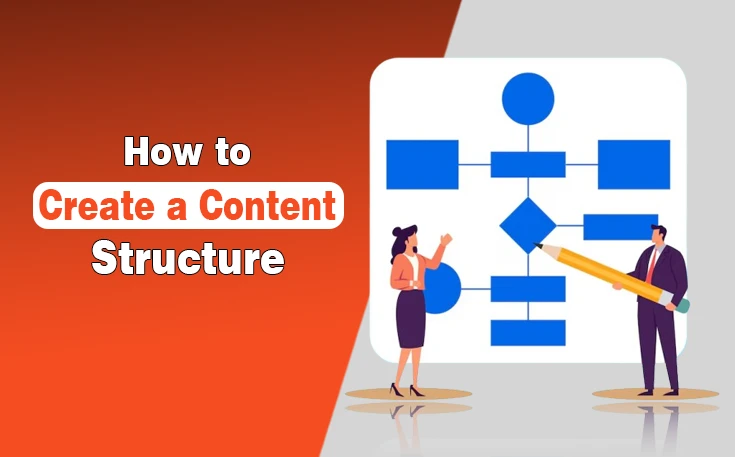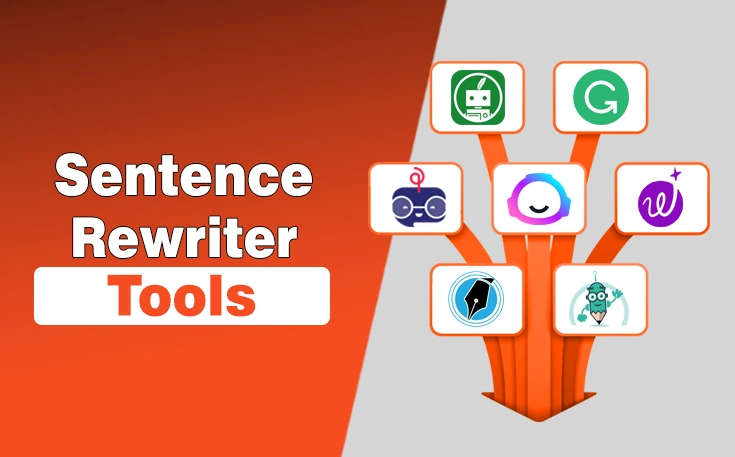Content structure is one of the most important parts when it comes to quality content writing. It is important because it allows users to understand the information you have provided quite easily. Furthermore, they can navigate through your content easily.
It is really not easy to create a well organized content structure as you have to enlist all the details and maintain the flow. However, if you possess experience regarding what you are writing, you can easily write the articles.
In this guide, I have provided the details on how to create a content structure for your website. You should follow the guidelines for effective content writing.
What is Content Structure?
Content structure is the term that refers to the organization and arrangement of information on the website. If you are a blogger or planning to start a blog, you should learn how to properly structure the content as it plays a crucial role in search engine optimization.
A well-structured content is enough to engage the users and improve their experience. Ultimately, this on-page SEO practice can help you increase the engagement rate of your website for higher rankings in the SERP.

Important Tips for Structuring the Content
Before moving ahead, I have mentioned some tips here you should know before structuring the content. It will further simplify the tasks for you.
Define Your Goals and Target Audience
It is essential to understand the purpose of your website and who your target audience is. Ask yourself the following questions:
- What is the primary goal of my website like providing information, selling products, and offering services?
- Who is my target audience such as age, gender, interests, and location?
- What are the main problems or needs of my audience?
When you understand the goals and requirements of your audience, you can easily write an article to meet their expectations and needs.
Conduct a Content Audit
If you already have existing content, conduct a content audit to assess what you have and identify gaps. This process involves:
- Listing all current contents whether in the form of blog posts, articles, and landing pages.
- Evaluating the quality and relevancy.
- Identifying outdated or missing content.
A content audit will give you a clear picture of your content so you can easily determine which of them is performing at their best and which needs improvements.
Create a Sitemap
A sitemap is a visual representation of the structure of your website. It outlines how different pages are interconnected. There are two types of sitemaps:
- HTML Sitemap: For users to navigate the site.
- XML Sitemap: For search engines to crawl the site.
An HTML sitemap helps you organize your content hierarchically, while an XML sitemap ensures that search engines can index your pages effectively.
How to Create a Content Structure for Your Website?
In the undersection, I have detailed how to create a content structure for your website. In this way, you can write engaging content while following the White Hat SEO techniques to achieve higher SERP rankings.
1 – Establish a Clear Navigation Structure
The navigation of your website should be intuitive and user-friendly. Here are some tips to achieve this:
- Use a simple and consistent menu structure
- Limit the number of main menu items to 7 or fewer
- Include a search bar for easy access to content
- Use breadcrumbs to show users their location within the site
A well-structured navigation menu helps users find information quickly and easily. An important tip is that you should create short paragraphs and give a space after completing one. It will provide users with a mental break and help them understand different perspectives of your article.
2 – Categorize Your Content
Organize your content into categories and subcategories to create a logical flow. Here is how to do this:
- Main Categories: Broad topics that cover the primary areas of your website like products, services, and blogs.
- Subcategories: More specific topics within each main category e.g., Under Blog: Technology, Lifestyle, Health.
Categorization helps users and search engines understand the relationships between different contents available on your site.
3 – Use Descriptive URLs
Next, you should create SEO-friendly URLs that describe the content of each page. Follow these guidelines:
- Keep URLs short and concise
- Use hyphens to separate words
- Include relevant low KD keywords
Descriptive URLs improve user experience and enhance search engine visibility.
4 – Optimize Content for SEO
Search engine optimization is essential for driving organic traffic to your website. For this purpose, you have to follow SEO best practices to write SEO friendly content. Here they are:
- Keywords: Conduct keyword research and use relevant keywords naturally in your content
- Meta Tags: Write compelling meta titles and descriptions
- Headings: Use H1, H2, H3 tags to structure your content
- Internal Links: Link to related content within your site to keep users engaged
Properly optimized content boosts SEO ranking and helps your website rank higher in search engine results.
5 – Create Engaging and Valuable Content
The quality of content always matters. However, you have to implement Google EEAT content policy which means that you should create people-first content and provide them will all the solutions they are looking for. In simple words, content is the heart of your website. You have to ensure that your content is:
- Relevant: Address the needs and interests of your target audience
- Engaging: Use a conversational tone and include visuals such as images and infographics.
- Valuable: Provide actionable insights, solutions, or entertainment
High-quality content attracts and retains visitors and encourages them to explore your site further. Moreover, when you perform the Image SEO, it further benefits you.
6 – Use a Content Management System (CMS)
A Content Management System like WordPress can help you manage and organize your content efficiently. The following are some of the key benefits of using a CMS:
- Ease of Use: User-friendly interfaces for content creation and editing
- Customization: Flexibility to design and structure your site according to your needs
- Scalability: Ability to handle a growing amount of content as your site expands
There are different content management systems available on the web. You should keep your requirements under consideration for better results.
7 – Test and Change
After implementing your content structure, you should continuously test and change it based on user feedback and performance metrics. Consider the following:
- Analytics: Use tools like Google Analytics to monitor user behavior and content performance
- A/B Testing: Experiment with different content layouts and navigation options
- User Feedback: Gather feedback through surveys, comments, and usability tests
Final Thoughts
These are the details on how to create a content structure for your website. I have mentioned all the tactics and important tips you should keep in mind when giving structure to your content. In this way, you can make them SEO friendly and improve your chances of ranking higher in the SERP.
When you properly structure your articles, it not only makes it easier for users to read and understand them but also for search engines to determine what your content is about. Ultimately, you can secure a higher position in the SERP.





